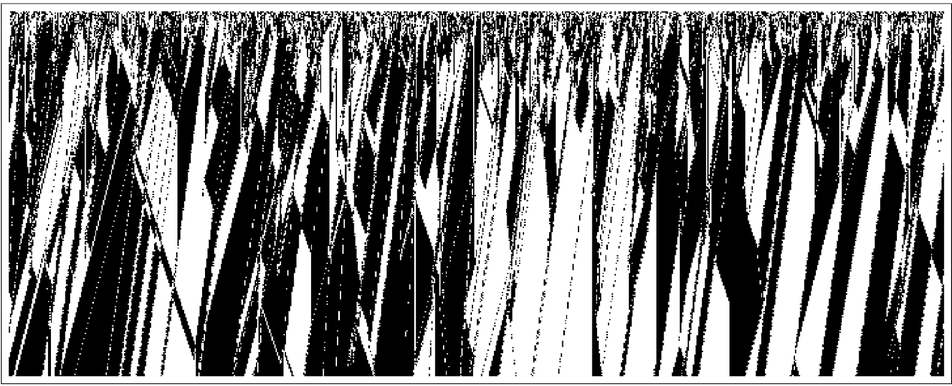The first set of pictures below show an example, based on the rule 184 cellular automaton. Starting from random initial conditions this rule yields a collection of stripes which annihilate whenever they meet, leading to a sequence of progressively larger nested regions.
And as the pictures show, these regions form a pattern that corresponds to a random tree that builds up from its smallest branches, much in the way that a river builds up from its tributaries.
Nesting in rule 184 is easiest to see when the initial conditions contain exactly equal numbers of black and white cells, so that the numbers of left and right stripes exactly balance, and all stripes eventually annihilate. But even when the initial conditions are such that some stripes survive, nested regions are still formed by the stripes that do annihilate. And indeed in essentially any system where there are domains that grow fairly independently and then progressively merge the same basic overall nesting will be seen.
As an example, the second picture below shows the rule 110 cellular automaton evolving from random initial conditions. The picture

The generation of a nested pattern by rule 184 starting from random initial conditions. The pattern consists of a collection of stripes, highlighted in the second picture, which form the tree-like structure shown in the third picture. The initial condition used has exactly equal numbers of black and white cells, causing all the stripes eventually to annihilate.

A highly compressed representation of the evolution of rule 110 from random initial conditions in which only the first cell in every 14×7 block is sampled.